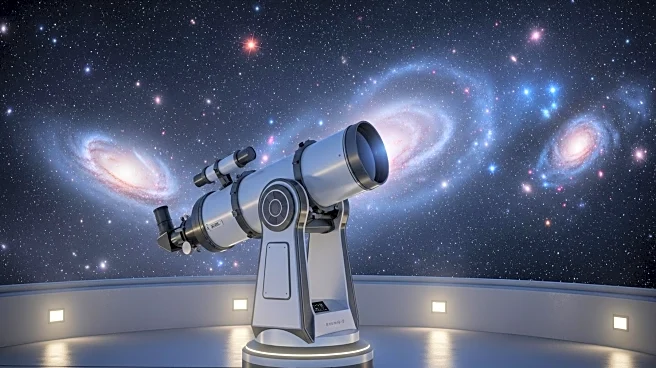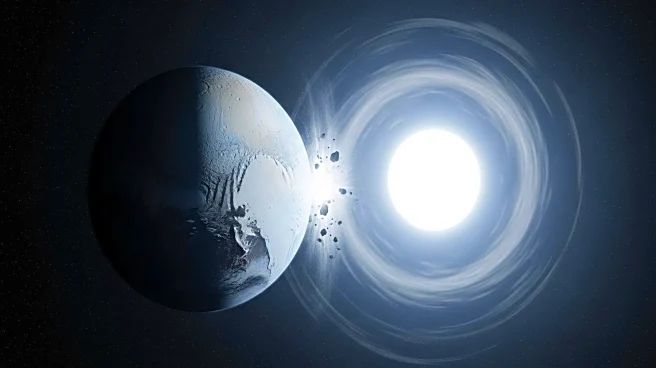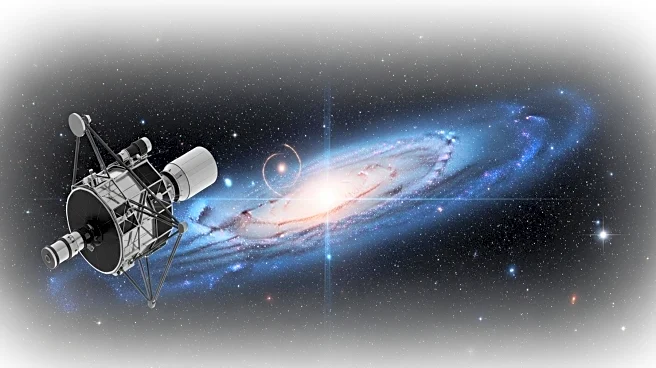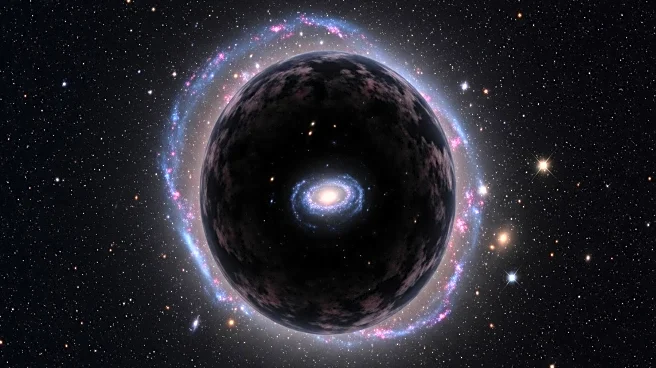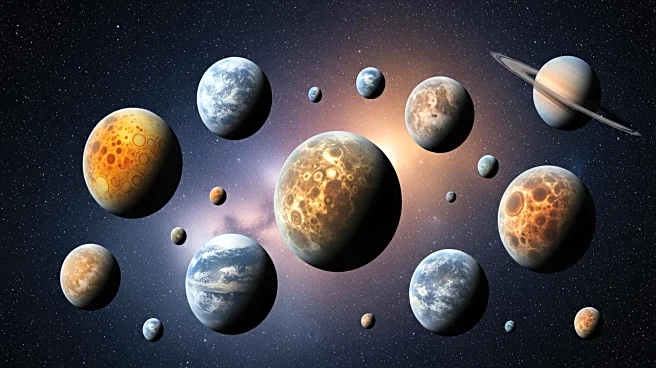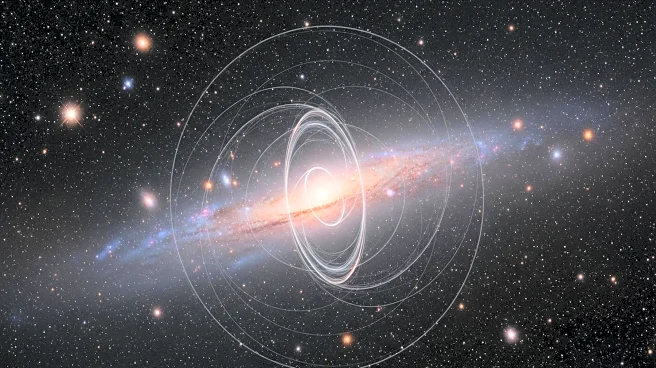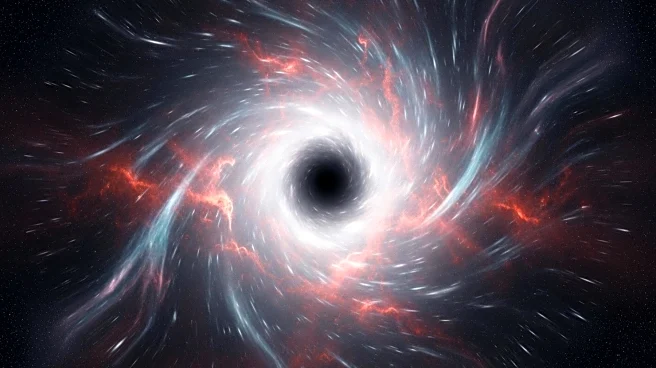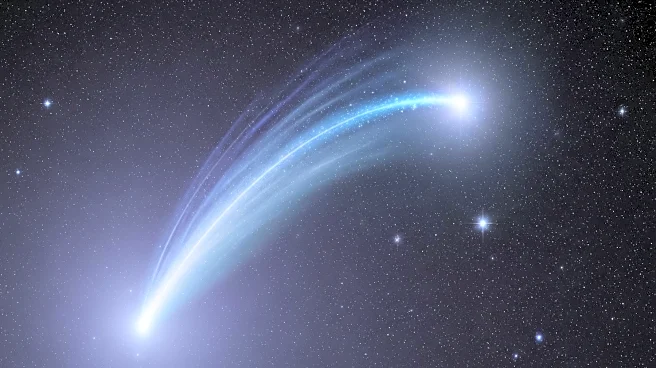What is the story about?
What's Happening?
Astronomers from the University of Arizona have made a significant discovery by detecting a young planet outside of our solar system. The planet, named WISPIT 2b, was found embedded in a cleared gap within a multi-ringed disk of dust and gas. This marks the first time such a phenomenon has been observed, providing valuable insights into the early stages of planetary formation. The discovery was made possible through the use of specialized telescopes located in Arizona and Chile. According to UA astronomer Laird Close, the planet is situated near a young star surrounded by a large ring of dust and gas, with WISPIT 2b appearing as a distinct purple dot within this formation.
Why It's Important?
The discovery of WISPIT 2b offers a unique glimpse into the processes that may have shaped our own solar system. By studying this young planet, astronomers can gain a better understanding of how planets like Jupiter and Saturn might have appeared when they were much younger. This research could lead to further discoveries of similar planets, enhancing our knowledge of planetary formation and evolution. The findings also underscore the importance of international collaboration in astronomical research, as the telescopes used in Arizona and Chile played a crucial role in this breakthrough.
What's Next?
The discovery opens up possibilities for further exploration and study of young planets outside our solar system. Astronomers may continue to search for other planets embedded in similar dust and gas formations, potentially leading to new insights into the formation of planetary systems. The ongoing research could also contribute to the development of more advanced telescopic technologies, enabling scientists to observe distant celestial bodies with greater precision.
Beyond the Headlines
This discovery highlights the ethical and scientific importance of investing in space exploration and research. Understanding the formation of planets can have long-term implications for our comprehension of the universe and our place within it. Additionally, the collaboration between institutions in different countries emphasizes the global nature of scientific inquiry and the shared benefits of such discoveries.
AI Generated Content
Do you find this article useful?


